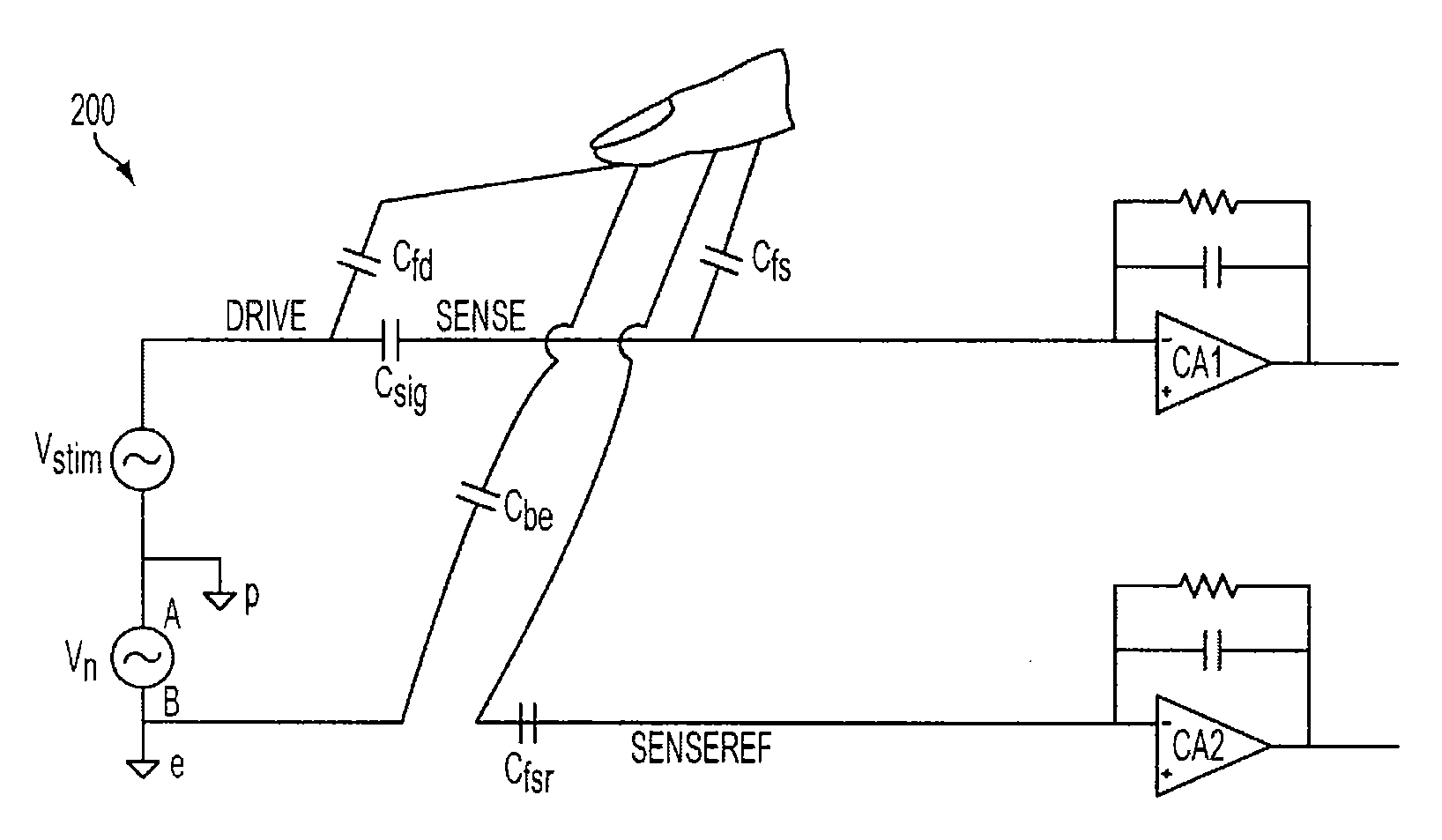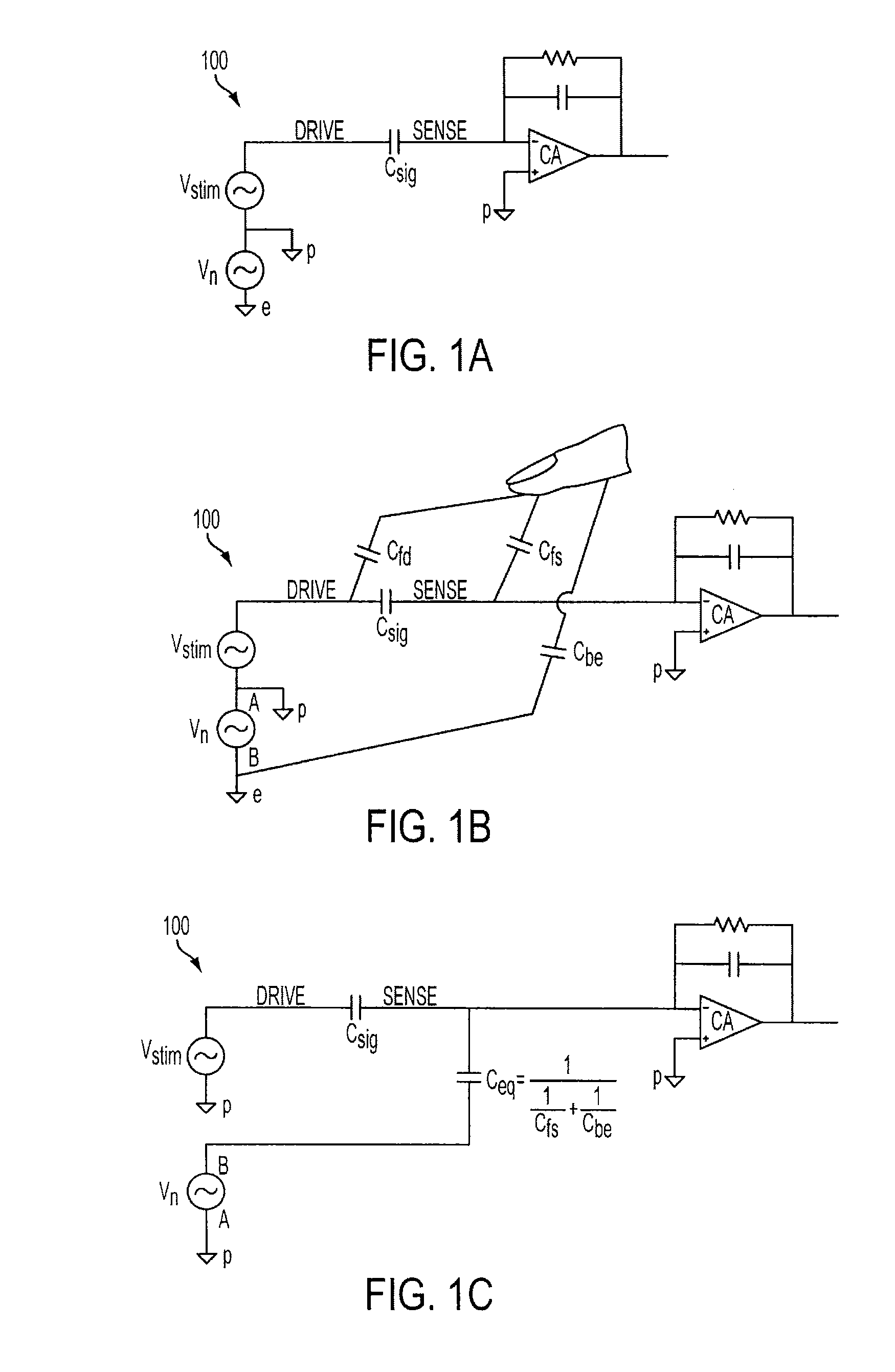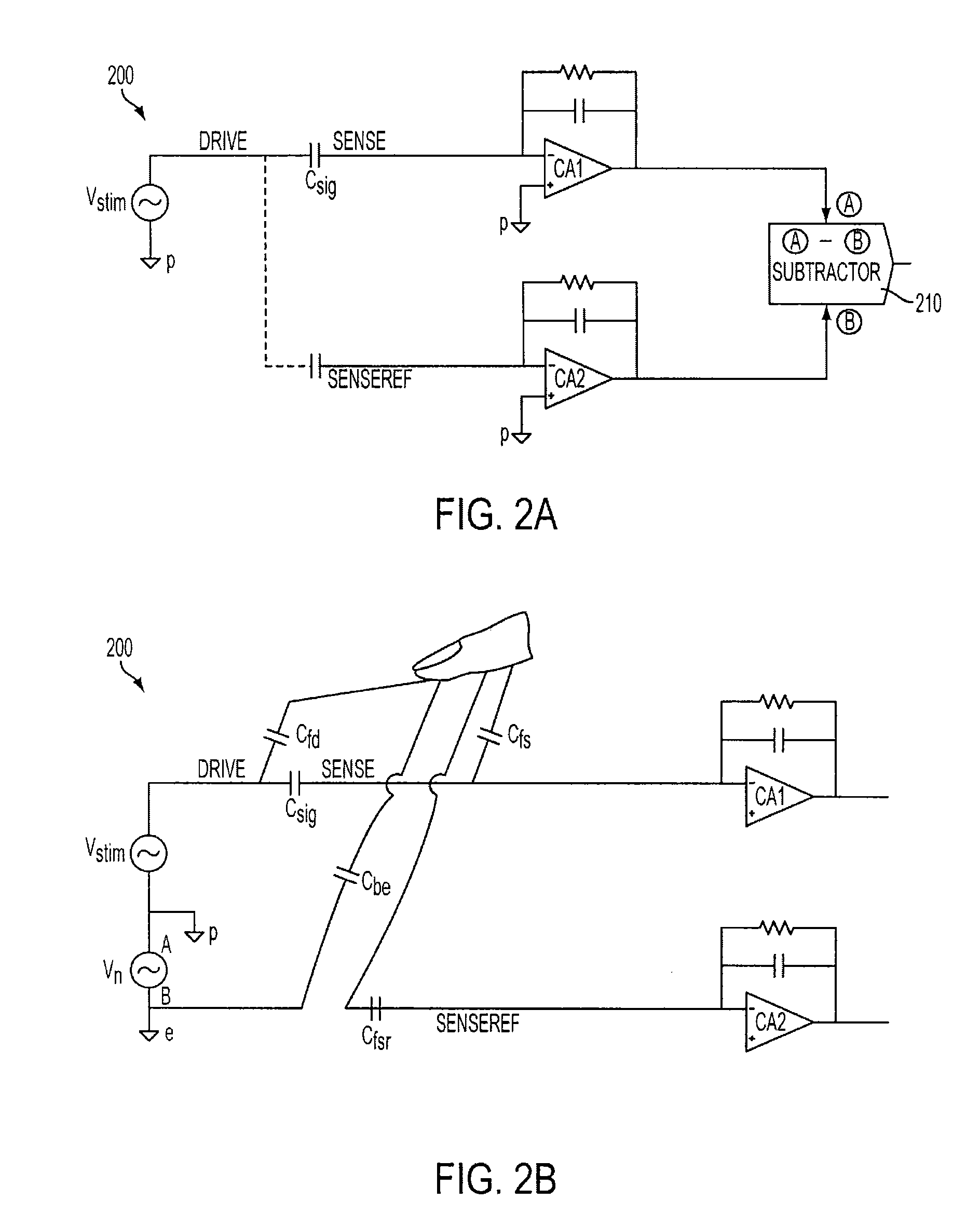Differential sensing for a touch panel
a technology of touch sensor and differential sensing, applied in the field of touch panel, can solve the problems of affecting the operation of the touch sensor panel, a relatively minor impact, if any, on the panel operation, and a certain amount of noise or electrical interference in the touch sensor panel
- Summary
- Abstract
- Description
- Claims
- Application Information
AI Technical Summary
Benefits of technology
Problems solved by technology
Method used
Image
Examples
Embodiment Construction
[0022]In the following description of preferred embodiments, reference is made to the accompanying drawings where it is shown by way of illustration specific embodiments in which the invention can be practiced. It is to be understood that other embodiments can be used and structural changes can be made without departing from the scope of the embodiments of this invention.
[0023]This relates to improving touch panel detection when the act of touching the panel causes noise to be injected into the panel's sensing elements. Such noise can adversely affect the operation of a touch panel. Depending on the configuration of the touch panel, adverse effects may include, for example, false touch readings for untouched locations on the touch panel, and saturation of the touch detection circuitry preventing recognition of a touch.
[0024]A touch panel can reduce the adverse effects of the injected noise by performing a sensing operation at each sensor (pixel) in both a stimulated and non-stimulat...
PUM
 Login to View More
Login to View More Abstract
Description
Claims
Application Information
 Login to View More
Login to View More - R&D
- Intellectual Property
- Life Sciences
- Materials
- Tech Scout
- Unparalleled Data Quality
- Higher Quality Content
- 60% Fewer Hallucinations
Browse by: Latest US Patents, China's latest patents, Technical Efficacy Thesaurus, Application Domain, Technology Topic, Popular Technical Reports.
© 2025 PatSnap. All rights reserved.Legal|Privacy policy|Modern Slavery Act Transparency Statement|Sitemap|About US| Contact US: help@patsnap.com



